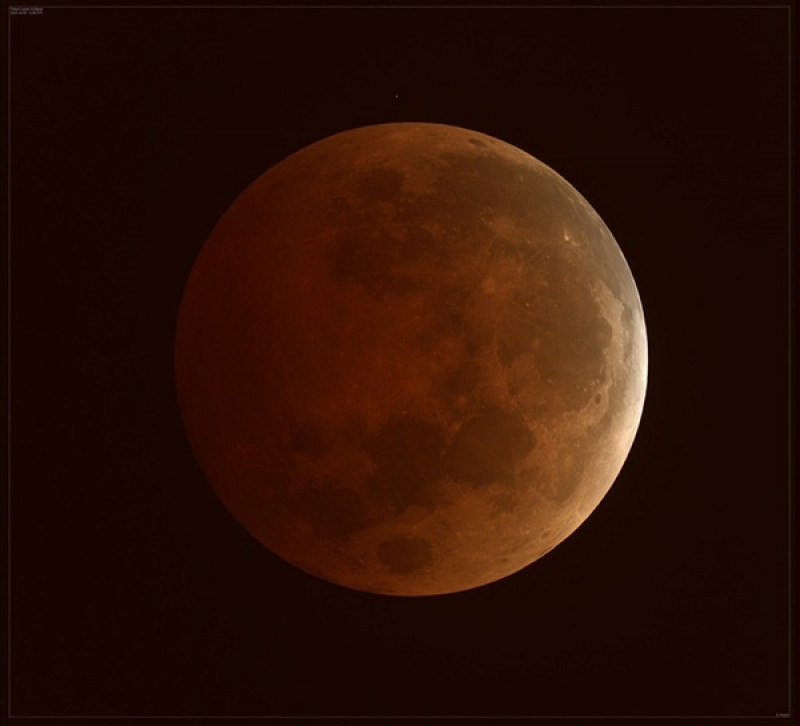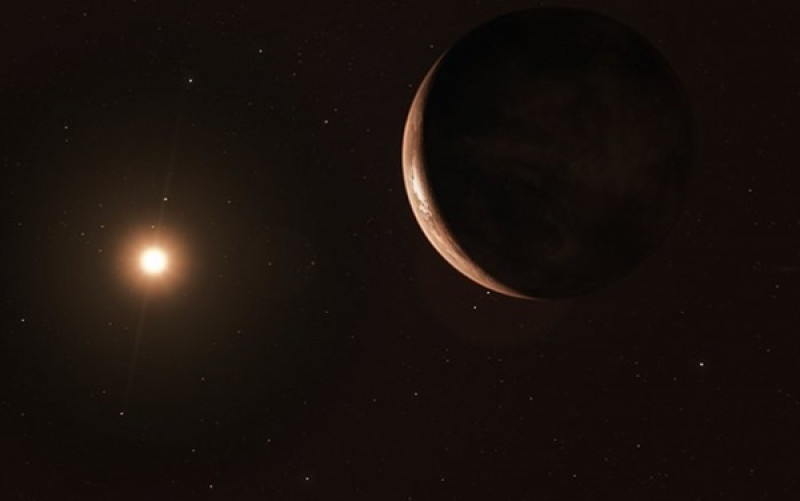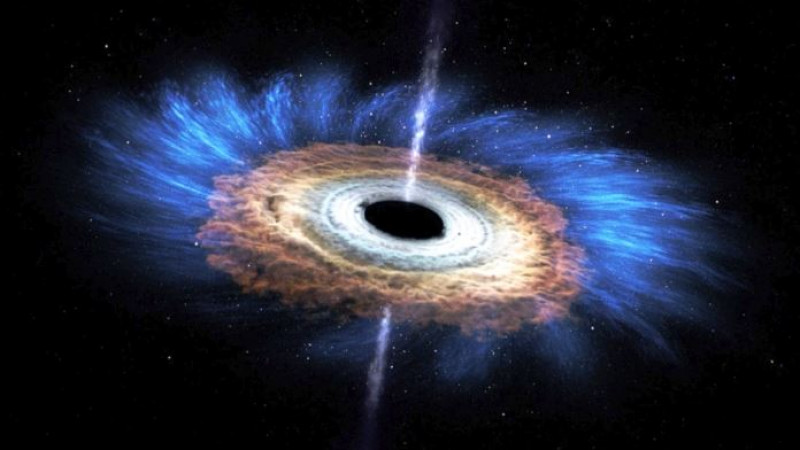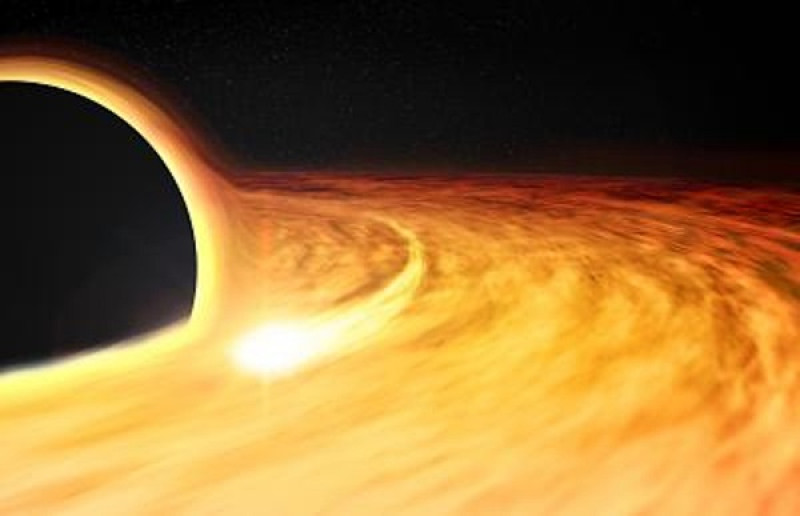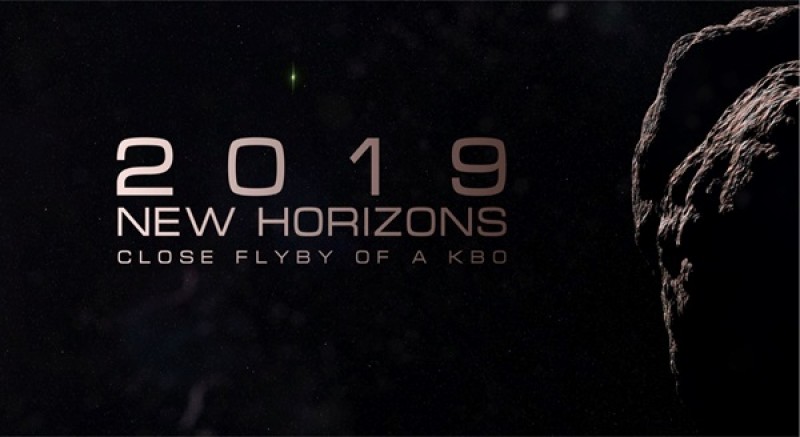News
PHOTOS: Super 'Blood Moon' Wows
Monday, January 21st 2019 03:01 PM
The huge, red moon awed viewers across the Americas and parts of western Europe and Africa on Sunday night and early Monday morning.
It was the only total lunar eclipse of the year, a "blood moon" in which sunlight leaking around the edges of the Earth makes the moon appear red. And it was also a supermoon, when a full moon appears larger than usual because it has neared the closest point to Earth in its orbit.
Some people even hailed the lunar spectacle as a "super blood wolf moon," or various permutations of those four words. That's because "wolf moon" is the traditional name for January's full moon.
The simultaneous phenomena made for a thrilling sight that lasted more than three hours from start to finish if you were lucky enough to see the whole thing:
Amsterdam Explorer@Amsterdamexplor
Bloodmoon spotting in #Amsterdam
11:19 PM - Jan 20, 2019
244
89 people are talkin...
Read More
Read More
The Sky This Week from January 18 to January 27
Friday, January 18th 2019 03:36 PM
Friday, January 18For those who recently caught the observing bug, the so-called Summer Triangle must seem like a huge misnomer. That’s because this asterism remains on view after darkness falls in January. Look for Vega, the fifth-brightest star in the sky and the brightest triangle member, low in the northwest. Deneb lies above Vega and about one-third of the way to the zenith. Deneb marks the top of another asterism, the Northern Cross, which stands nearly straight up from the horizon on January evenings. Altair, the third triangle member, scrapes the western horizon and sets around 6:30 p.m. local time.Saturday, January 19Although Uranus reached opposition and peak visibility nearly three months ago, it remains a tempting target. The outer planet appears nearly 60° high in the southwest after darkness falls and doesn’t set until after midnight local time. The magnitude 5.8 world lies in southeastern Pisces, some 1.2° north of the 4th-magnitude star Omicron ()...
Read More
Read More
Plants have been grown on the Moon!
Wednesday, January 16th 2019 02:54 PM
Lunar plants
There’s life on the Moon! Plant life, that is. Cotton seeds have reportedly just sprouted in an experiment aboard China’s Chang’e 4 Moon lander.
The mission became the first to touch down on the surface of the far side of the Moon earlier this month. The spacecraft carried with it a number of instruments designed to study the lunar surface and geology of the Von Kármán crater where the craft made its soft landing.
Along with a number of sophisticated scientific instruments, the mission’s lunar lander carried a sealed container, the lunar mini biosphere experiment. It contains soil and cotton, rape, arabidopsis and potato seeds. As of Tuesday, Chinese state media report that the cotton seeds have sprouted aboard the lander. Previously, plants have been grown on the International Space Station, but this is the first time that any biological matter has grown on the Moon, according to the BBC.
The ne...
Read More
Read More
Tonight, asteroid Eros will make its closest approach to Earth until 2056
Tuesday, January 15th 2019 03:12 PM
Near-Earth asteroid 433 Eros makes its closest approach to Earth since 2012 today, when it comes within 19.4 million miles (31.2 million kilometers) of our planet.
Throughout the week, asteroid Eros glows at 9th magnitude, making it bright enough to glimpse through small telescopes. The elongated asteroid has an average diameter of just over 10.5 miles (17 km), making it about 1/50th the diameter of dwarf Planet Ceres, which is the largest body in the asteroid belt. Asteroid 433 Eros resides about 10° southwest of brilliant Capella this evening, a region that lies high in the east after darkness falls. If you can't make it out tonight (or clouds thwart your plans), be sure to catch Eros sometime this month — it won’t be as close or as bright again until 2056.
Read More
Read More
Conditions for life might exist on new planet discovered around Barnard's star
Monday, January 14th 2019 04:02 PM
Late last year, astronomers announced that they’d found a super-Earth around Barnard’s star – one of the closest suns to our own. The discovery of a planet just six light-years away was enough to excite astronomers and the public alike. However, the researchers who found the planet said that they suspected the icy world couldn’t support life.
But now, a group of astronomers are saying such pessimism may be premature. On Earth, geothermal vents produce heat and create unique environments where life thrives in places otherwise difficult to eke out a living – like the frigid, dark deep of the oceans. The team says similar processes could be at work on this world, which is officially cataloged as Barnard b.
Barnard’s star is a low-mass red dwarf , which means it’s small, ancient, and only emits a fraction of the energy our sun puts out. The planet itself is about three times the mass of Earth and orbits the star every 233 days. So,...
Read More
Read More
Astronomers May Have Seen a Star Turn Into a Black Hole for the First Time
Friday, January 11th 2019 11:33 AM
On June 16, 2018, astronomers around the world witnessed a cosmic flash unlike anything they’d ever seen before. Now, in a forthcoming paper to be published in theAstrophysical Journal, an international team of 45 scientists argue that what they saw that day was likely the exact moment a star collapsed into a black hole. If they’re right, it would be the first time that this transition was ever witnessed by human scientists.
When a star runs out of nuclear fuel, some of its mass flows into its core, which eventually gets so dense that it collapses from its own gravitational force. This creates an explosion known as a supernova, which astronomers on Earth can detect as a bright flash of light.
The event witnessed last June, now known as “The Cow” in homage to the event’s official name—AT2018cow—originally caught the eye of astronomers around the world because it was ten times brighter than a typical supernova.
The flash of lig...
Read More
Read More
Astronomers clock a black hole spinning at half the speed of light
Thursday, January 10th 2019 03:38 PM
Black holes are massive beasts that annihilate anything that dares to cross them. We don’t know a whole lot about these invisible, terrifying bodies, but astronomers have found a new way to study their mysterious behavior.By observing the X-rays blasting from a star torn apart by a black hole, a team of researchers were able to calculate how fast the black hole spins — clocking it at nearly 50 percent the speed of light. This marks the first time that astronomers used X-rays, which orbit the black hole every 131 seconds, to calculate its incredible speed. The research, which could help correlate a black hole’s age with its speed, was published today in the journal Science.
Stellar Shredding
The discovery dates back to November 2014, when astronomers were observing a galaxy 300 million light years from Earth. They saw the galaxy’s central, supermassive black hole lure in and rip apart a passing star. Known as a tidal disruption flare, this event created a...
Read More
Read More
Rocket Launches, Trips to the Moon and More Space and Astronomy Events in 2019
Wednesday, January 2nd 2019 10:17 PM
Just as we’ve caught our breaths from 2018’s exciting and very busy year in space and astronomy, 2019 is already off to a rapid start. Before we finish the first week of this year, we’ll see a Chinese probe landing on the moon, an eclipse and NASA’s New Horizons spacecraft complete a flyby of the most distant object ever visited in the solar system.
However much you love space and astronomy, we know it can be challenging to keep on top of the latest out-of-this-world news. We’ve put dates for these events and more on The Times’s Astronomy and Space Calendar, which has been updated for 2019. Subscribe on your personal digital calendar, and you’ll be automatically synced with our updates all year long.
Below are some of the launches, space science and other events we anticipate. You’ll find these and others added to your calendar as their dates approach.
The moon wil...
Read More
Read More
New Horizons spacecraft set for historic flyby of Kuiper Belt Object
Monday, December 31st 2018 11:02 PM
Planetary scientists from around the world have flocked to Baltimore, Maryland, to cover the first-ever close-up exploration of a Kuiper Belt Object, beyond the orbit of Pluto. The flyby will take place on New Year’s Eve and New Year’s Day, by the New Horizons spacecraft, which flew past Pluto in 2015.The Kuiper Belt is a third population of bodies in the solar system, beyond the major planets and the main belt asteroids. It lies far out, beyond Neptune and Pluto, and consists of probably hundreds of thousands of small objects that represent primitive materials affording a window into the early state of our solar system and its formation. The New Horizons team, led by planetary scientist Alan Stern, chose an object discovered just a few years ago, designated 2014 MU69, now called Ultima Thule (pronounced TOOL-ee), a Latin phrase meaning “a place beyond the known world.” This small body probably consists of dirty ices and rocky materia...
Read More
Read More
How we found Jupiter's 79 (at least) moons
Saturday, December 29th 2018 08:54 PM
Jupiter is king of the planets. It’s huge, it’s bright in our night skies, and even four of its comparatively tiny moons are bright enough to see with the most basic of telescopes. We’ve sent nine probes either into orbit or on a close flyby of the planet. And yet, as recently as this past year, we discovered not one, but twelve new moons around Jupiter, bringing the total to 79. How haven’t we exhausted this particular moon mine yet?
The easy targets first
The answer is that most of Jupiter’s moons aren’t the grand companion that our own moon is to Earth, at nearly a quarter as wide as its host planet. The four moons first spotted by Galileo in 1610 — Io, Europa, Ganymede and Callisto — are big enough compared to our moon, but absolutely puny when compared to Jupiter, the planet they circle. And those are the easy targets. It makes discovering new moons against its bulk difficult.
It took the advent of pho...
Read More
Read More

